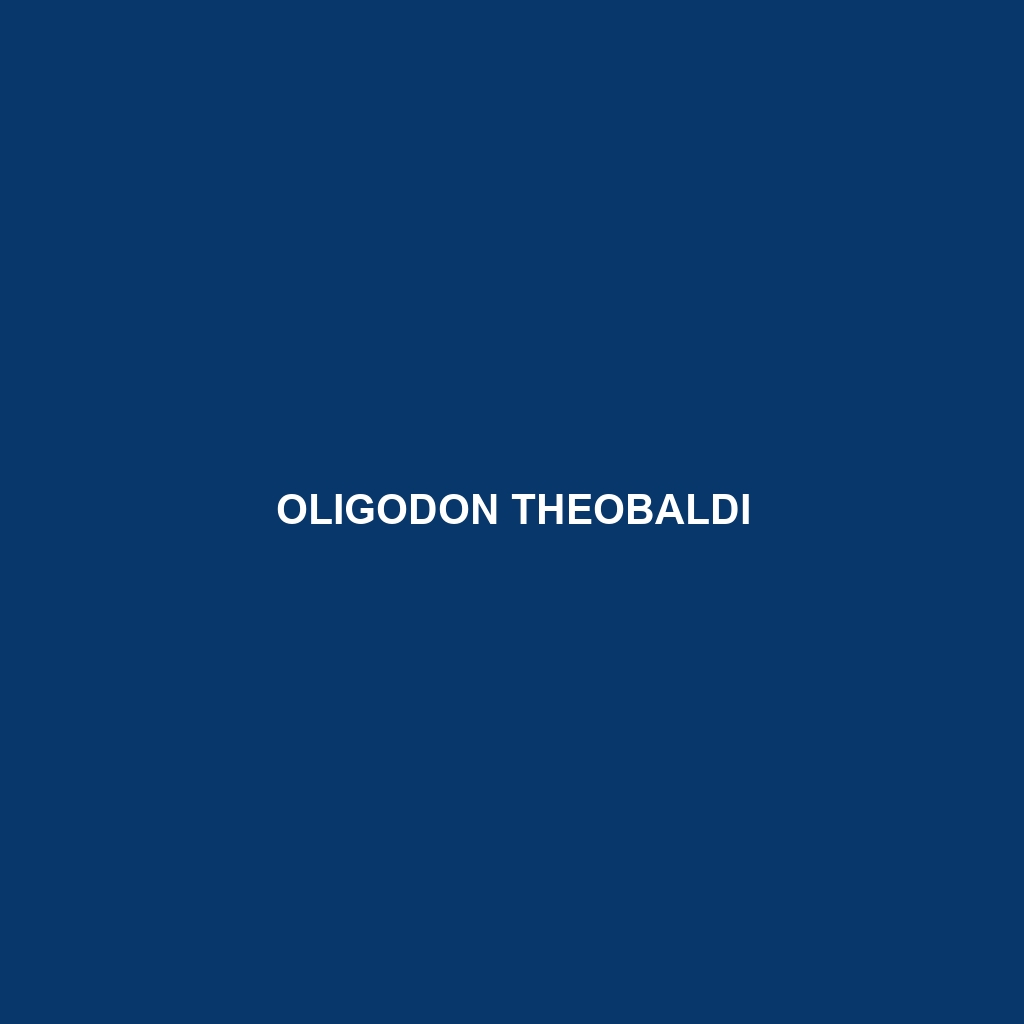Common Name
Oligodon theobaldi
Scientific Name
Oligodon theobaldi
Habitat
The Oligodon theobaldi, commonly known as Theobald’s kukri snake, primarily inhabits tropical and subtropical regions of Southeast Asia. This species is predominantly found in dense rainforests, where humidity and temperature levels are consistently high. It tends to occupy moist areas near water bodies, including rivers and streams, which provide ample prey and suitable microhabitats. Oligodon theobaldi can also be observed in savannas and some transition zones between these lush forests and more open landscapes. The overall climatic conditions these habitats provide play a crucial role in the life cycle and behaviors of this species.
Physical Characteristics
Oligodon theobaldi is a slender-bodied snake that typically reaches a length of approximately 60 to 80 cm (about 24 to 31 inches). Its scales exhibit a distinctive pattern which often includes shades of brown, grey, and black, providing effective camouflage against the forest floor. The dorsal pattern exhibits longitudinal streaks or spots, which assist in blending into its environment. A notable feature of this species is its curved, elongated teeth, adapted specifically for its feeding habits. The kukri snake’s head is distinctly wider than its neck, enhancing its hunting capabilities through improved maneuverability.
Behavior
Oligodon theobaldi is primarily nocturnal, displaying heightened activity during the night. This behavior allows it to avoid daytime predators while hunting for food. The species is mostly solitary, preferring to engage in territorial behaviors during the mating season, which generally occurs in the warmer months. Males often engage in ritualistic displays to establish dominance and attract females. When threatened, Theobald’s kukri snake can exhibit defensive behaviors, such as flattening its body and hissing, to deter potential predators.
Diet
As a carnivorous species, Oligodon theobaldi primarily feeds on small vertebrates and invertebrates, including amphibians, lizards, and various insects. Its unique curved teeth enable it to effectively consume prey, which it swallows whole. The diet is supplemented with seasonal offerings, depending on the availability of food sources in its habitat. The snake plays a crucial role as an insectivore in the ecosystem, helping control insect populations, particularly in the wet tropical environments where it resides.
Reproduction
The reproductive cycle of Oligodon theobaldi typically begins in the late wet season, aligning with the peak availability of food resources. Mating occurs after a courtship display, where males perform specific movements to attract females. After a gestation period of approximately 30 to 45 days, females lay between 5 to 12 eggs, depending on the age and health of the female. The hatchlings emerge after about two months and are independent from birth. Parental care is minimal; however, females may guard the eggs until they hatch, showcasing a level of protection for the young.
Conservation Status
Currently, Oligodon theobaldi is not classified as endangered or threatened; it is considered to have a status of Least Concern by the International Union for Conservation of Nature (IUCN). However, habitat destruction due to logging, agricultural expansion, and urbanization poses ongoing threats to its population. Conservation efforts are needed to preserve their natural habitat and ensure the survival of this fascinating species.
Interesting Facts
One intriguing aspect of Oligodon theobaldi is its unique feeding habits. Apart from the typical prey, the species is known to consume the eggs of other reptiles, illustrating its adaptability. Furthermore, the exquisite patterns on its body have made it a subject of interest among herpetologists and snake enthusiasts, appreciating its beauty and ecological significance. Additionally, the kukri snake has a unique ability to diffuse defensive chemicals, which helps it evade predation from potential threats.
Role in Ecosystem
Oligodon theobaldi plays a vital role in its ecosystem as both predator and prey. By controlling populations of rodents and insects, it contributes to maintaining ecological balance. The species also serves as a food source for a variety of larger predators, demonstrating its integral part in the food web. As a predator, the kukri snake helps to regulate populations of its prey species, while its presence indicates the health of the rainforest ecosystem it inhabits, being a critical component of biodiversity in these habitats.
